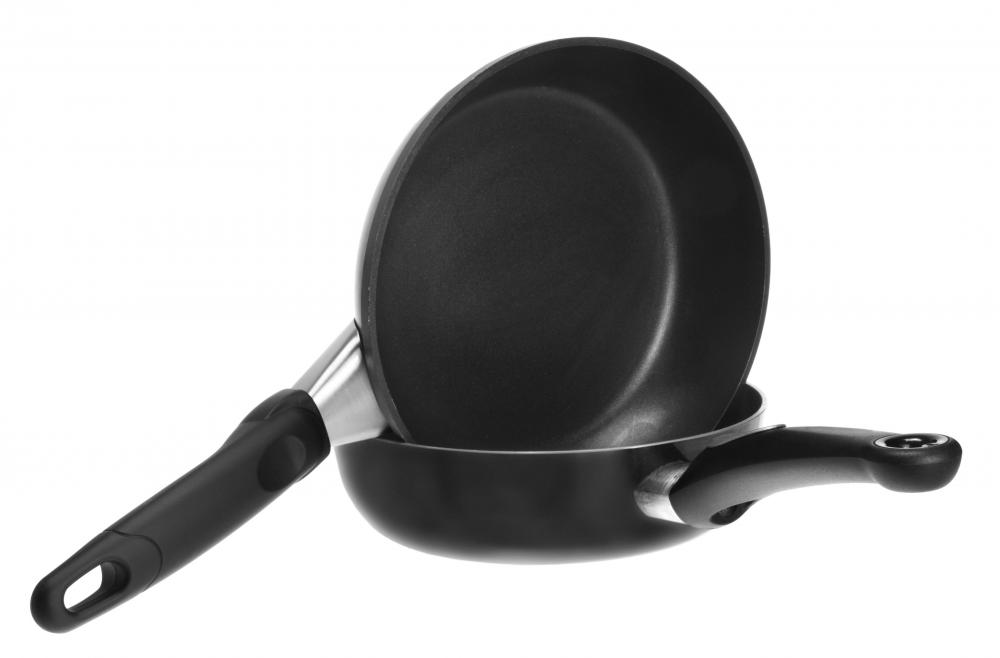At WiseGEEK, we're committed to delivering accurate, trustworthy information. Our expert-authored content is rigorously fact-checked and sourced from credible authorities. Discover how we uphold the highest standards in providing you with reliable knowledge.
What Is Infused Anodized Cookware?
Infused anodized cookware is aluminum pots and pans that have been treated with polymers, acids and electrical charges to create a surface that is almost completely nonporous. The benefit of infused anodized cookware is that food will rarely stick to the bottom of the pan and the aluminum will heat very quickly. One potential drawback is that, while the pans are very durable under most situations, they are vulnerable to some chemicals, acidic products and high heat. The coating on infused anodized cookware is smooth and does not resemble more traditional nonstick coatings. Over time, from normal wear and usage, the anodized surface of the cookware will start to pull away from the base aluminum and eventually leave the pan without a coating, at which time most manufacturers recommend disposing of the pan.
The process of anodizing aluminum involves exposing the aluminum to acids while an electrical current is passed through the metal. The resulting reaction causes the surface to oxidize, which is the same process that creates rust on metal. The oxidized particles fill the pores of the metal and make the surface non-porous, meaning it is less likely to have food stick to it.

Creating infused anodized cookware follows nearly the same process but adds a proprietary technique that introduces polymers to the coating. Unlike a nonstick coating that is sprayed on a pan, the polymers combine with the metal and with the oxidizing particles, infusing the polymers into the structure of the pan. The infused polymers are not simply a separate coating, so they create a more resilient surface than an applied nonstick coating does.
While infused anodized cookware has good nonstick properties because of the way it is created, it also has some issues. One is that the polymer, like other nonstick polymers, will release a potentially toxic gas when it is heated to a very high temperature. Similarly, sharp utensils can gouge the surface and cause the polymers to be released, along with some of the anodized coating, into the air or into foods over time.
Two large restrictions that apply to infused anodized cookware have to do with acidic chemicals and foods. Some ingredients in certain dishwashing liquids will cause the polymers to break down, shortening the lifespan of the pan. Likewise, acidic chemicals such as propellants found in some spray products, such as nonstick cooking sprays, also will harm the surface of the pan. Foods such as baking soda can have the same effect and should be avoided.
Overall, however, infused anodized cookware is resilient and resists most physical damage quite well. Many foods will not stick to the surface so long as the coating is intact. While time eventually will wear away the surface of the cookware, proper care can extend this amount of time to several decades or more.
AS FEATURED ON:
AS FEATURED ON:











Discuss this Article
Post your comments